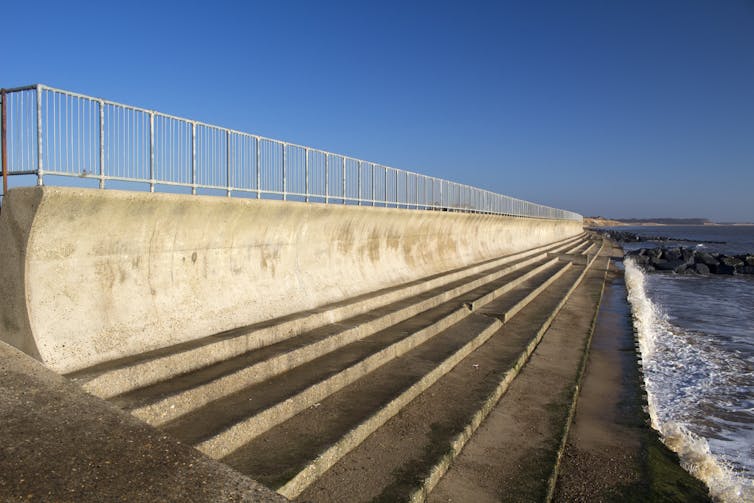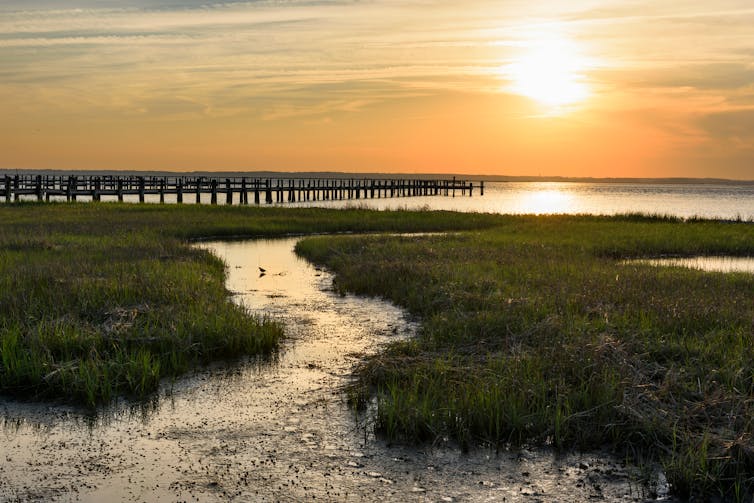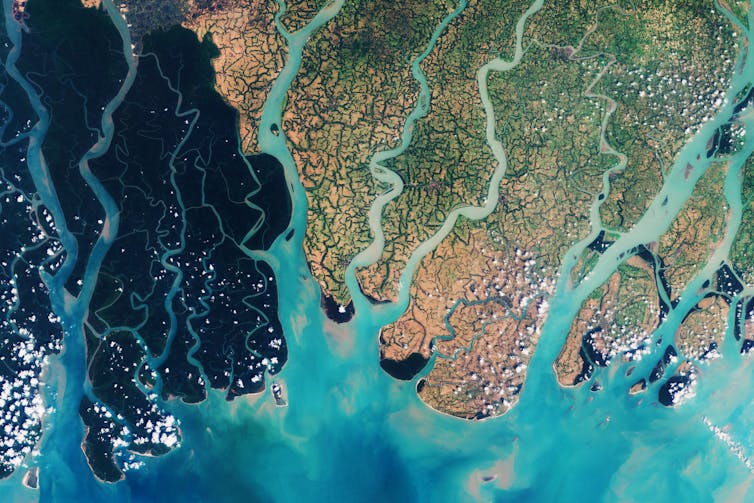Even under the most conservative climate change scenarios, sea levels 30cm higher than at present seem all but certain on much of the UK’s coast by the end of this century. Depending on emission scenarios, sea levels one metre higher than at present by 2100 are also plausible.
The knee-jerk reaction to sea level rise has traditionally been to maintain the shoreline’s position at all cost, by building new flood defence structures or upgrading old ones. More than $10 billion per year is already spent worldwide on “grey” infrastructure such as concrete walls and levies to protect against coastal flooding. Equally large are the costs incurred when coastal defences fail.
The United Nations has called on governments to relocate public facilities and infrastructure from flood-prone areas, while the UK Climate Change Committee has urged the government to “set out how and when the hard choices that have to be made on the coast are going to happen”.

Letting nature decide
The traditional approach of “grey” engineered sea defences locks society into ever increasing costs of replacement and maintenance. The alternatives are “nature-based solutions” to coastal flooding and erosion, which work with natural processes to reduce flood risk and incorporate ecosystems into flood defence.
Rather than seeing the coast as a static line, these alternatives rethink the coastlines as zones with valuable habitats such as beaches, dunes and wetlands that act as carbon stores, places for recreation and natural buffers against the waves.
Schemes such as the Wild Coast Project at Wallasea on the UK’s east coast have restored salt marshes where land had been reclaimed for agriculture years earlier. The tide and waves now regenerate salt marsh where it had been embanked and drained. If designed well, such schemes create new habitat which can reduce the height and intensity of storm surges and lower flood risk.
This technique for managing sea level rise can be thought of as allowing nature the space to create new coastal habitats within well-defined boundaries, akin to flooding a “sandpit”. In this sandpit, enough coastal space is vacated by humans to give natural processes room to respond to sea level rise by creating new wetlands further inland where once the terrain was dry.

While such interventions do not enable full control over water levels and waves, they are designed to keep them at a safe distance from humans. Nature may be allowed to have some freedom to “play in the sandpit” created for it and people may not care what type of salt marsh or mudflat forms at Wallasea. But, as with “grey” infrastructure, humans ultimately build the sandpit by setting its boundaries.
The future of the world’s coastlines, however, is uncertain as the coast is inherently dynamic. Every wave and tide shapes the coast such that it determines how the next wave and tide can shape it. Though people may not notice it, the coast and the habitats which line it are never fixed and in fact change a great deal over a single human lifetime. People may create pockets of space for nature and think they are in control when in fact humans never were and it is doubtful they ever can be.
Observing nature’s sandpit
This is amply illustrated by the freshwater grazing marshes at Blakeney in Norfolk, on the UK’s east coast, where embankments were breached during the 2013 storm surge. A storm surge at sea forced salt water through an embankment into the Blakeney Freshes nature reserve, a unique freshwater wetland. Though unintended, salt water flooding of embanked areas like the Freshes can create a new ecosystem there and prevent flood waters from rising in adjacent areas, where people would have come to harm.
The Blakeney Freshes illustrate the importance of allowing sufficient space for nature to decide the boundaries of its “sandpit”. The more space given to it and the wider the buffer zone of coastal landforms, the lower the risk of flooding to areas that lie further inland.
As with weather forecasts, predicting how complex natural processes will interact at the coast is difficult – certainly over years and decades. It is time people stopped pretending that nature can be controlled at all, whether through “grey” or “green” engineering schemes. The best option is to watch and learn.

The means for monitoring exist, with ever-improving measurement technology, data transmission and high-resolution satellite imagery, such as the European Commission’s Copernicus programme.
Responding to sea level rise may be as simple as allowing space for the flow of water and sediment during extreme events. Society can do so by relinquishing the need to control the process and restricting development near the coast, creating areas that nature can “claim” with whatever habitat it wishes to “build” there.
As a salt marsh turns into a tidal flat, a freshwater field into a salty lagoon, there is the opportunity to stand back, watch and learn to better understand how and why those changes happen and how people can benefit from change rather than fight a losing battle to prevent it.![]()
Iris Möller, Lecturer in Coastal Processes, University of Cambridge
This article is republished from The Conversation under a Creative Commons license. Read the original article.